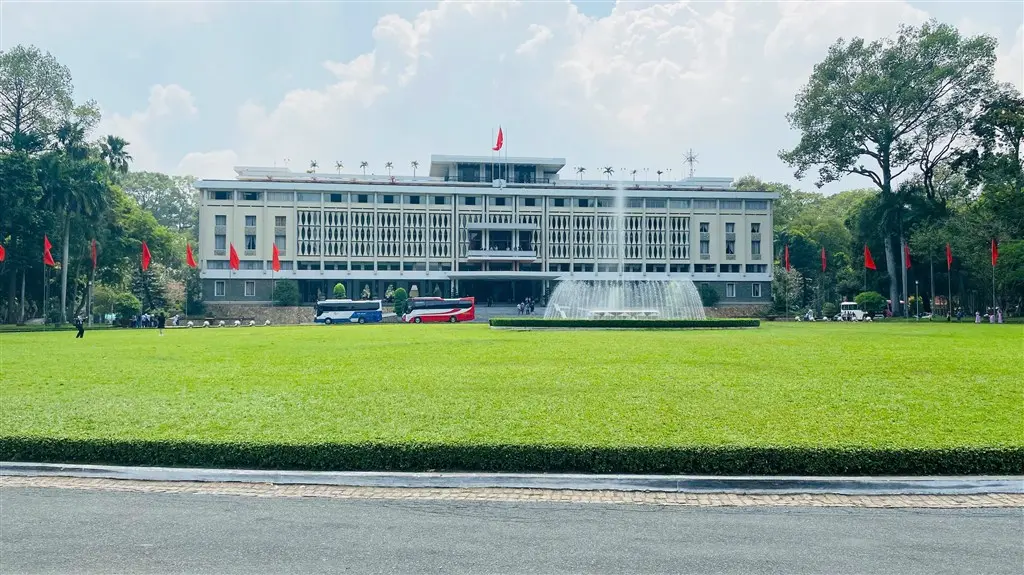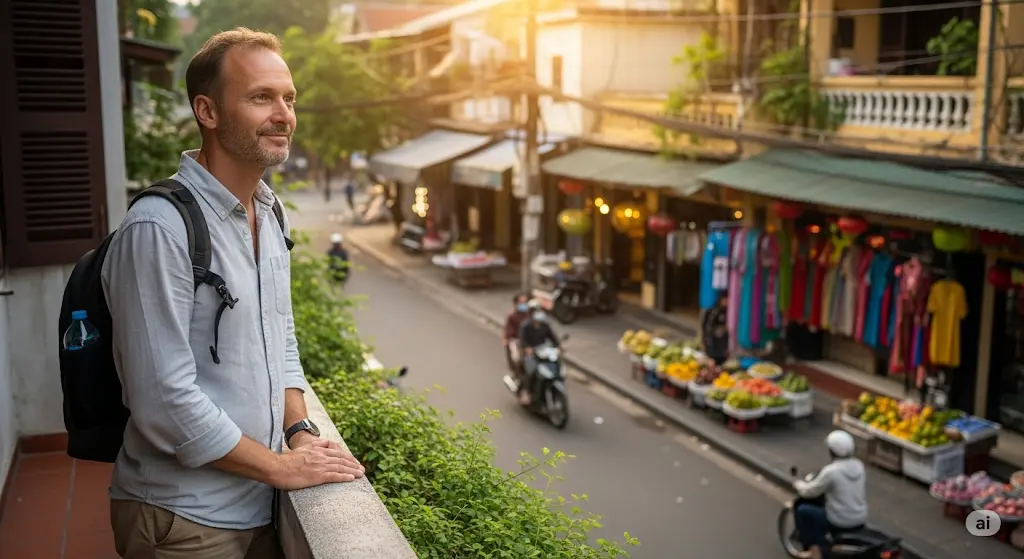Welcome to an insightful journey with EssentialVietNamtravel.com. We aim to provide a deep understanding of vietnamese people, a community rich in history, culture, and unique traditions. This guide offers a window into their world. Understanding the people from vietnam enhances any interaction, travel, or study related to this vibrant nation in Southeast Asia. We will explore the essence of being vietnamese.
The story of vietnamese people is one of resilience and adaptation. Their cultural tapestry is woven with threads from ancient legacies and modern influences. For anyone looking to connect with Vietnam, understanding its people is the first, most crucial step. This exploration seeks to provide clarity and foster appreciation. We will cover aspects from their historical roots to contemporary life, offering a holistic view. Join us as we delve into the lives, values, and spirit of the vietnamese person and the collective identity of vietnam people.
Unveiling the Heart of Vietnamese People: Core Aspects of their Culture, History, and Unique Characteristics
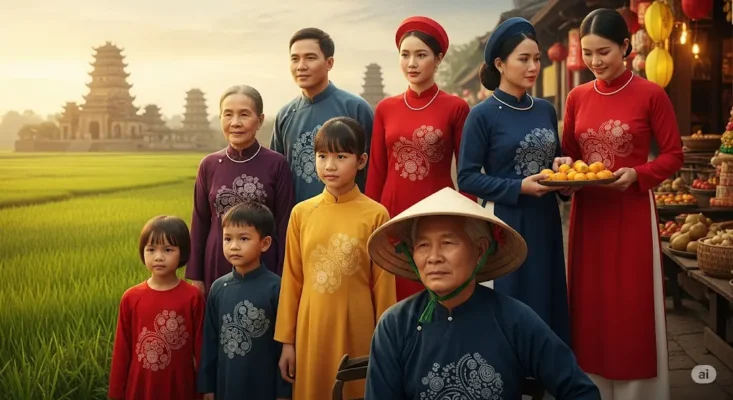
The identity of vietnamese people is a complex mosaic, shaped by millennia of history and a vibrant Culture. To truly understand people from vietnam, one must look at the bedrock of their society: their shared heritage, historical journey, and the unique traits that define them. Vietnam, a prominent nation in Southeast Asia, boasts a lineage that stretches back thousands of years, with the Dong Son drum culture standing as a testament to its ancient origins. The Historical narrative is crucial for understanding the present.
Vietnamese culture is deeply influenced by several major currents. Early Chinese civilization left a lasting mark, particularly in a shared Confucianism heritage that emphasizes social harmony, respect for elders, and the importance of education. This influence is visible in family structures, societal norms, and even aspects of the Vietnamese language. Later, French colonialism introduced Western elements, impacting architecture, cuisine, and the administrative system.
The period of French Indochina was transformative, yet vietnamese people skillfully integrated these influences without losing their core identity. This synthesis of Eastern philosophies and Western encounters has created a truly unique cultural blend. One of the most valued traits, evident throughout their history, is Resilience. This characteristic has enabled them to endure wars, occupations, and significant societal shifts, always emerging with a strong sense of self.
The unique characteristics of vietnamese people extend to their artistic expressions and daily life. The Ao Dai, a graceful traditional dress, is recognized worldwide as a symbol of Vietnamese elegance. This National Dress is more than attire; it is a statement of cultural pride. Water puppetry is another unique art form, originating from the rice paddies of the Red River Delta, showcasing stories of rural life and folklore.
The Lotus flower, often seen as the National Flower, symbolizes purity, commitment, and optimism for the future. These symbols are not mere decorations but are deeply embedded in the national consciousness. Vietnamese people are often described as Hardworking and Family-oriented. The family unit is the cornerstone of society, and filial piety, or respect for parents and ancestors, remains a Core Social Value. This emphasis on community and interconnectedness shapes their interactions and worldview.
The Unique tonal language, with its six tones, adds another layer to their distinct identity. Understanding these core aspects – the blend of Vietnam history, enduring Culture, and specific traits like Resilience and family focus – is fundamental to appreciating the vietnamese people and what vietnamese represents. The Kinh people form the dominant ethnic group, but the nation is a mosaic of many cultures. The common cultural background provides a strong sense of shared national identity despite regional variations. Learning about vietnamese culture and history is the first step to truly connect.
Embracing Tradition: Exploring the Customs and Daily Life of People of Vietnam

The daily life and customs of the People of Vietnam offer a vibrant window into their soul, deeply rooted in traditions passed down through generations. These practices shape their interactions, celebrations, and understanding of the world. Central to this is the concept of community and the intricate web of social relationships. Vietnamese traditions are not relics of the past; they are living, breathing aspects of modern society, seamlessly blended with contemporary life. From the bustling markets of Hanoi to the tranquil villages of the Mekong Delta, these customs provide a rhythm to life.
One of the most significant cultural events is Tet Nguyen Dan, or Tet holiday, the Vietnamese Lunar New Year. This Major Traditional Holiday is a time for family reunions, honoring ancestors, and praying for good fortune. Preparations for Tet are extensive: homes are cleaned, special foods are cooked (like Banh Chung – a sticky rice cake), and ancestral altars are laden with offerings.
How vietnamese people celebrate Tet reveals their deep respect for ancestral worship and the importance of family bonds. It is a period of joy, reflection, and renewal, showcasing traditional vietnamese people’s values. The streets are adorned with flowers, particularly peach blossoms in the north and apricot blossoms in the south, and the Red flag with yellow star, the national flag, is proudly displayed.
Family views are paramount. The traditional Vietnamese family is often an extended unit, with multiple generations living together or in close proximity. Filial piety, the respect and obedience owed to one’s parents and elders, is a cornerstone value derived from Confucianism. Decisions are often made collectively, with consideration for the family’s well-being.
This strong family orientation extends to a broader sense of community, where neighbors support each other. Communication styles can be characterized by an indirect communication preference. Harmony is highly valued, so direct confrontation is often avoided. Understanding this high context culture, where meaning is often conveyed through non-verbal cues and shared understanding, is key to effective interaction.
Daily life is also rich in culinary traditions. Vietnamese cuisine is renowned for its fresh ingredients, balance of flavors, and regional diversity. Pho, a savory noodle soup, has become an iconic national dish, enjoyed at any time of day. Rice is the Staple Food, accompanying almost every meal. Green tea is a common traditional beverage, often offered as a gesture of hospitality.
The Ao Dai, the National Dress, while not worn daily by everyone, makes frequent appearances during festivals, weddings, and formal occasions, symbolizing Vietnamese grace. The Non La, a conical hat, is a practical and iconic accessory, particularly in rural areas, protecting from sun and rain. Belief in ancestral worship is widespread, often intertwined with Buddhism and Folk Religion, forming the Predominant Religion in practice for many.
Small altars in homes and businesses are common, where offerings are made to ancestors and deities. These enduring customs and traditions are vital for anyone wanting to understand Vietnamese people and their way of life. They are not just “vietnamese things” but integral parts of their identity as Practitioners of Vietnamese customs.
Vietnamese People Beyond Borders: Understanding the Viet Kieu Diaspora and their Continued Connection to Vietnam
The story of vietnamese people extends far beyond the geographical boundaries of Vietnam. A significant global community, known as Viet Kieu (literally “Vietnamese sojourners”), forms the Vietnamese diaspora. These are people from vietnam or of Vietnamese ethnicity living outside the country. Their presence worldwide is a testament to historical events, particularly the period following the Vietnam War, and ongoing economic migration. Understanding the Viet Kieu is essential for a complete picture of the Global population of vietnamese people.
The reasons for emigration varied. Many left as refugees seeking safety and new opportunities after 1975. Others have since moved for education, work, or to join family members already settled abroad. Countries like the United States, Australia, Canada, and France host large Viet Kieu communities. These communities often act as cultural hubs, preserving traditions while adapting to new environments. They are not Foreigners in spirit to their homeland, nor are they simply Outsiders in their host nations; they often navigate a dual identity.
Despite the distance, many Viet Kieu maintain strong connections to Vietnam. This connection manifests in various ways. Culturally, they continue to speak the Vietnamese language, celebrate traditional holidays like Tet, and pass on Vietnamese culture to younger generations. Family ties remain crucial, with frequent communication, visits, and remittances sent back to support relatives in Vietnam. These financial contributions have played a role in Vietnam’s Economic development. Diaspora communities also contribute to a global understanding of Vietnamese culture through restaurants serving Vietnamese cuisine, cultural festivals, and artistic expressions.
The relationship between Viet Kieu and vietnamese people in Vietnam has evolved. Initially, there might have been complexities, but over time, interactions have become more positive and frequent. The Vietnamese government now actively encourages Viet Kieu to return, invest, and contribute their skills and knowledge to the nation’s development. Many Viet Kieu have indeed returned to start businesses, work in various sectors, or retire in their homeland.
They bring with them international experience and perspectives, enriching modern Vietnamese society. Finding information about Vietnamese diaspora reveals a dynamic, resilient group that bridges cultures. They are an integral part of the broader Vietnamese identity, showcasing how heritage can be maintained and transformed across borders. Their experiences add another layer to understanding what it means to be vietnamese in a globalized world. They are not Non-Vietnamese; they are an extension of the Vietnamese family across the globe.
Planning a Trip to Vietnam?
Whether you’re visiting family or exploring your heritage, find the most affordable flights to connect with the heart of Vietnam.
Shaping a Nation: Discovering Influential Vietnamese People, including Figures like Ho Chi Minh, and their Impact on Vietnam History
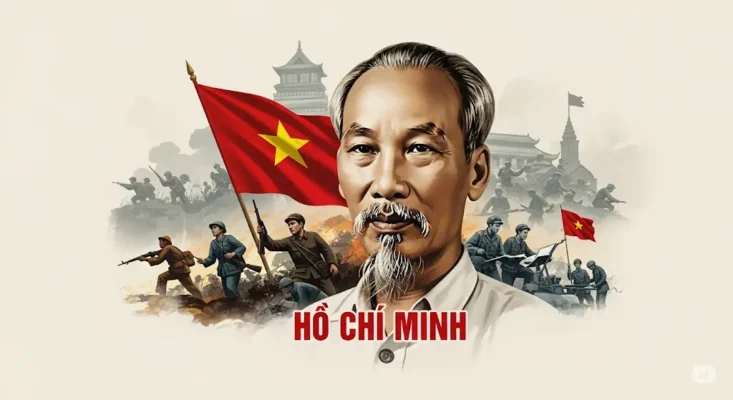
The historical narrative of Vietnam is punctuated by the actions and legacies of influential vietnamese people who guided the nation through pivotal moments. Understanding these figures, especially leaders like Ho Chi Minh, is crucial to grasping the trajectory of Vietnam history and the formation of the modern Socialist Republic of Vietnam. These individuals often embodied the Patriotic spirit and Resilience characteristic of the vietnam people.
Ho Chi Minh is undoubtedly one of the most famous vietnamese people in history. His role in the fight for independence from French Indochina and later during the Vietnam War cemented his status as a national hero for many. He was a key figure in establishing the Democratic Republic of Vietnam (North Vietnam) and remains a potent symbol of national unity and sovereignty.
His image and teachings continue to influence contemporary Vietnamese society, and Ho Chi Minh City (formerly Saigon) is named in his honor. Discovering notable Vietnamese individuals often begins with learning about his life and impact. His leadership helped galvanize a nation, and his ideals are still frequently referenced.
Beyond Ho Chi Minh, Vietnam’s history is rich with other leaders, scholars, and warriors who shaped its destiny. The Trung Sisters, for example, led a rebellion against Chinese rule in the 1st century AD, becoming enduring symbols of Vietnamese resistance and female empowerment. General Tran Hung Dao repelled Mongol invasions in the 13th century, showcasing strategic brilliance and national determination.
These figures from ancient and medieval history contributed to a deep-seated sense of national pride and an unwillingness to be subjugated. The Dong Son drum, an ancient artifact, symbolizes this long-standing cultural identity that predates many foreign influences. The Red flag with yellow star, the national flag of Vietnam, represents the revolutionary spirit and the blood shed for independence, with the star symbolizing the unity of different classes of society led by the Communist Party.
The impact of these individuals extends beyond political and military achievements. Scholars and poets have shaped Vietnamese literature and philosophy, contributing to the unique cultural fabric. The development of Quoc Ngu, the romanized Vietnamese script, by figures like Alexandre de Rhodes in the 17th century, was a pivotal moment that facilitated widespread literacy and cultural expression, distinguishing the Vietnamese language from Chinese characters.
Even during periods of significant colonial influence, such as French colonialism, there were always vietnamese people working to preserve and adapt their culture. The collective actions of these individuals, celebrated and unknown, have forged the resilient and independent spirit of the Vietnamese nation. Their stories are woven into the curriculum, public monuments, and the collective memory, continually shaping the identity of vietnamese people today. Understanding their contributions helps one appreciate the depth of Vietnam history and the foundations upon which the modern nation is built.
A Glimpse into Modern Vietnam: Life, Society, and the Spirit of Vietnamese Nationals in Cities like Hanoi and Regions like the Mekong River
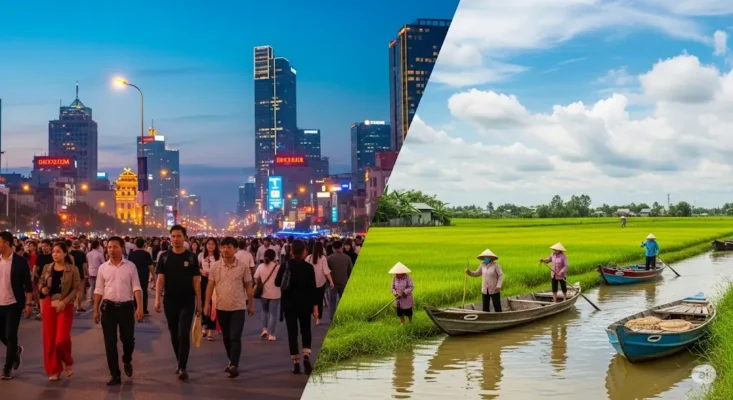
Modern Vietnam presents a dynamic picture of rapid Economic development coexisting with cherished traditions. The spirit of Vietnamese nationals today is characterized by optimism, industriousness, and an embrace of new opportunities while holding onto their cultural roots. Life varies significantly between bustling urban centers like Hanoi and Ho Chi Minh City (often still referred to by its historic name, Saigon, in daily conversation) and the agricultural heartlands such as the Mekong River delta.
In major cities, the pace of life is quick. Hanoi, the Capital City Context, blends ancient temples and colonial architecture with modern skyscrapers and a vibrant youth culture. Ho Chi Minh City is the nation’s economic engine, a sprawling metropolis known for its entrepreneurial energy. Young vietnamese people in these urban areas are often highly educated, technologically savvy, and globally aware.
The Vietnamese economy has seen remarkable growth in recent decades, lifting millions out of poverty and creating a burgeoning middle class. This transformation is visible in the proliferation of new businesses, improved infrastructure, and increased consumerism. The Country Currency, the Vietnamese Dong, reflects this economic activity. The Governing Political System remains a Socialist Republic, which guides national development strategies.
Life in rural areas, such as the fertile Mekong Delta, proceeds at a different tempo. Here, agriculture, particularly rice cultivation and fishing, remains the mainstay. Communities are often close-knit, and traditional values may be more visibly preserved. The Mekong River itself is a lifeblood, shaping the landscape and the livelihoods of millions.
While modernization is reaching these areas too, the connection to the land and to age-old practices remains strong. This contrast between urban and rural life creates a diverse social fabric within Vietnam. The approximate population in Vietnam is around 98 million people, making it one of the most populous countries in Southeast Asia.
Across both urban and rural settings, the inherent Resilience and Hardworking nature of vietnamese people shine through. There is a strong emphasis on education as a means of advancement. Family support systems remain crucial, even as societal norms evolve. While embracing modernity, Vietnamese nationals often express a deep pride in their Culture and History. This is evident in the continued celebration of traditional festivals, the popularity of Vietnamese cuisine, and the respect shown for elders.
The challenges of development, such as income inequality and environmental concerns, are present, but there is a collective drive to build a prosperous and sustainable future for Vietnam. Understanding this blend of old and new, of rapid change and enduring values, is key to appreciating the contemporary spirit of vietnamese people. They are navigating the complexities of the 21st century with a unique blend of pragmatism and cultural pride.
The Foundations of Identity: Exploring the Language and Core Values of the Kinh Ethnicity and Broader Vietnamese People
The identity of vietnamese people, particularly the majority Kinh ethnicity, is deeply anchored in their unique Language and a set of core values that have been cultivated over centuries. These elements form the bedrock of their shared national identity and influence how people from vietnam perceive the world and interact with each other. Understanding these foundations offers profound insights into what it means to be vietnamese.
The Vietnamese language (Tiếng Việt) is a cornerstone of Vietnamese identity. It is a tonal language, meaning the pitch at which a syllable is pronounced changes its meaning. This Unique tonal language, typically with six distinct tones in the northern dialect, can be challenging for learners but is rich in expressive capability. The official writing system is Quoc Ngu, a romanized script developed in the 17th century by European missionaries, which eventually replaced the classical Chinese characters (Chữ Nôm) previously used.
This shift made literacy more accessible and further distinguished Vietnamese culture. Today, being Speakers of Vietnamese is a primary identifier for vietnamese people worldwide. The language is not just a tool for communication; it is a carrier of culture, history, and a distinct worldview.
Beyond language, a set of core values shapes the character of vietnamese people. Filial piety (hiếu thảo) stands out as a Core Social Value. This profound respect for parents, elders, and ancestors is deeply ingrained from a young age. It influences family dynamics, social hierarchy, and even national sentiment, where the country is sometimes seen as a larger family. Closely linked to this is the Importance of community. Vietnamese society is traditionally collectivist, where the needs and harmony of the group often take precedence over individual desires. This fosters strong social bonds and a sense of mutual responsibility.
Resilience is another defining trait. Throughout a long History marked by conflict and hardship, vietnamese people have demonstrated an extraordinary capacity to endure, adapt, and rebuild. This resilience is coupled with a Hardworking ethic. There is a strong belief in the value of diligence and perseverance as pathways to success and a better future for one’s family.
Hospitality (hiếu khách) is also a widely cherished value. Vietnamese people are generally welcoming and generous to guests, often going to great lengths to make visitors feel comfortable. This is evident whether you are in a family home or a local shop. Patriotism, a deep love for their country, is another powerful sentiment, forged through centuries of striving for independence and national unity.
While the Kinh people form the dominant ethnic group (Kinh ethnicity being synonymous with “Vietnamese” for many outside the country), Vietnam is home to 53 other recognized ethnic groups, each with its own distinct language and cultural traditions. However, the Vietnamese language and these overarching core values provide a common cultural background and contribute to a shared national identity for all Vietnamese citizens.
These foundational elements – the language, filial piety, community focus, resilience, hard work, hospitality, and patriotism – are essential to understanding the enduring spirit and character of the vietnamese person and the collective vietnamese poeple. They explain not just how vietnamese and people interact, but why they do so in their uniquely characteristic ways.
EssentialVietNamtravel.com hopes this comprehensive exploration has provided you with valuable insights into the multifaceted world of vietnamese people. From their ancient roots and rich traditions to their dynamic present and the foundational elements of their identity, understanding these aspects can enrich any engagement with Vietnam and its remarkable people.

